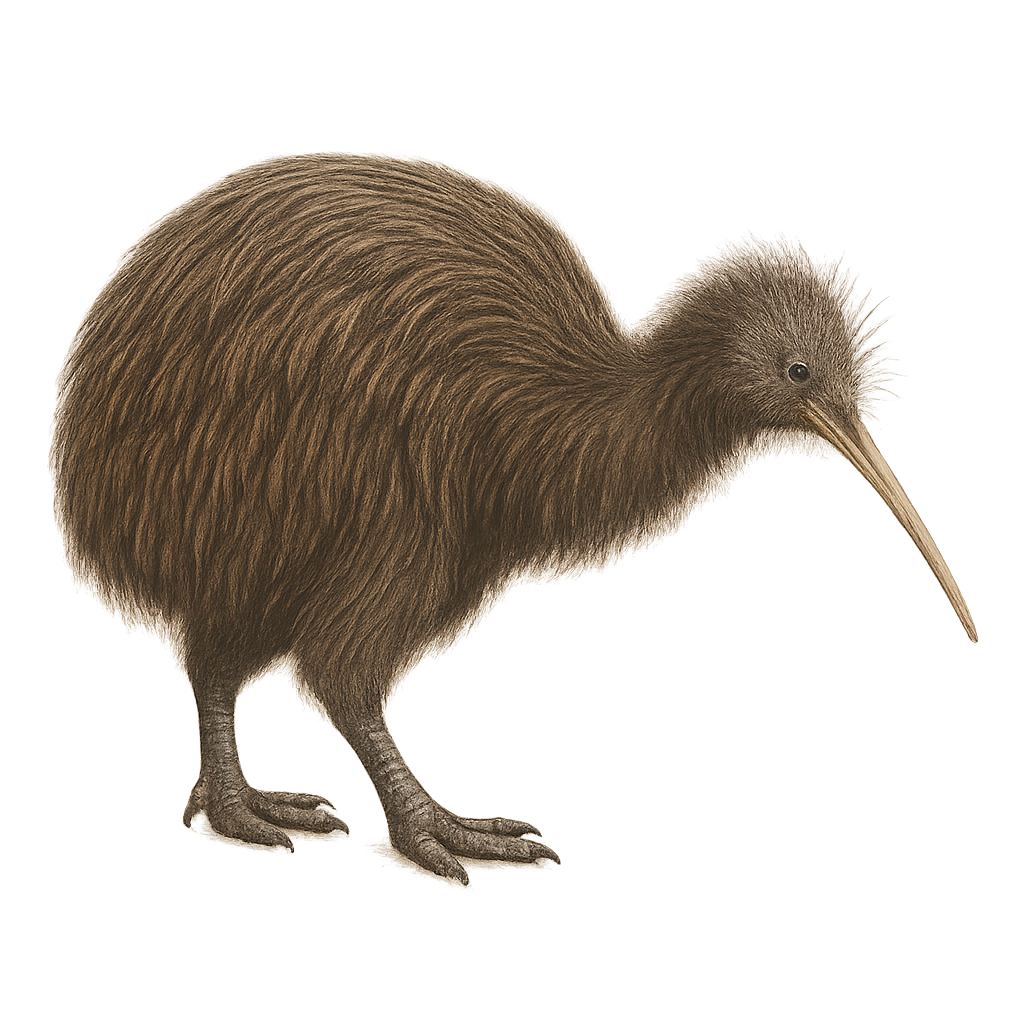Your wildlife photography guide.
Explore the southern brown kiwi in detail, study its behavior, prepare your shots.
Where to observe and photograph the southern brown kiwi in the wild
Learn where and when to spot the southern brown kiwi in the wild, how to identify the species based on distinctive features, and what natural environments it inhabits. The WildlifePhotographer app offers tailored photography tips that reflect the southern brown kiwi’s behavior, helping you capture better wildlife images. Explore the full species profile for key information including description, habitat, active periods, and approach techniques.
Southern Brown Kiwi
Scientific name: Apteryx australis

IUCN Status: Near Threatened
Family: APTERYGIDAE
Group: Birds
Sensitivity to human approach: Suspicious
Minimum approach distance: 10 m
Courtship display: June to August
Incubation: 70-85 jours
Hatchings: August to October
Habitat:
dense forests, scrublands
Activity period :
Mainly active at night, generally discreet during the day.
Identification and description:
The Southern Brown Kiwi, or Apteryx australis, is a flightless bird endemic to New Zealand, known for its shaggy brown plumage. This medium-sized kiwi measures about 50 cm in length and weighs between 2 and 3.5 kg. It has a long, slender bill adapted for probing the ground for worms and insects. Nocturnal by nature, it is rarely seen during the day. Its natural habitat includes dense forests and scrublands. The Southern Brown Kiwi is monogamous, forming long-lasting pairs. The female typically lays one or two eggs per season, which the male incubates. Although protected, it is threatened by predation and habitat loss.
Recommended lens:
400 mm – adjust based on distance, desired framing (portrait or habitat), and approach conditions.
Photography tips:
To photograph the Southern Brown Kiwi, it's essential to respect its nocturnal habitat. Use a 400mm or longer telephoto lens to capture images from a distance without disturbing the bird. Opt for twilight hours to take advantage of its active period. A tripod and high ISO sensitivity will help you get sharp images in low light conditions. Be patient and discreet, as the kiwi is suspicious and sensitive to noise.
The WildlifePhotographer App is coming soon!
Be the first to explore the best nature spots, track rutting seasons, log your observations, and observe more wildlife.
Already 1 439 wildlife lovers subscribed worldwide

